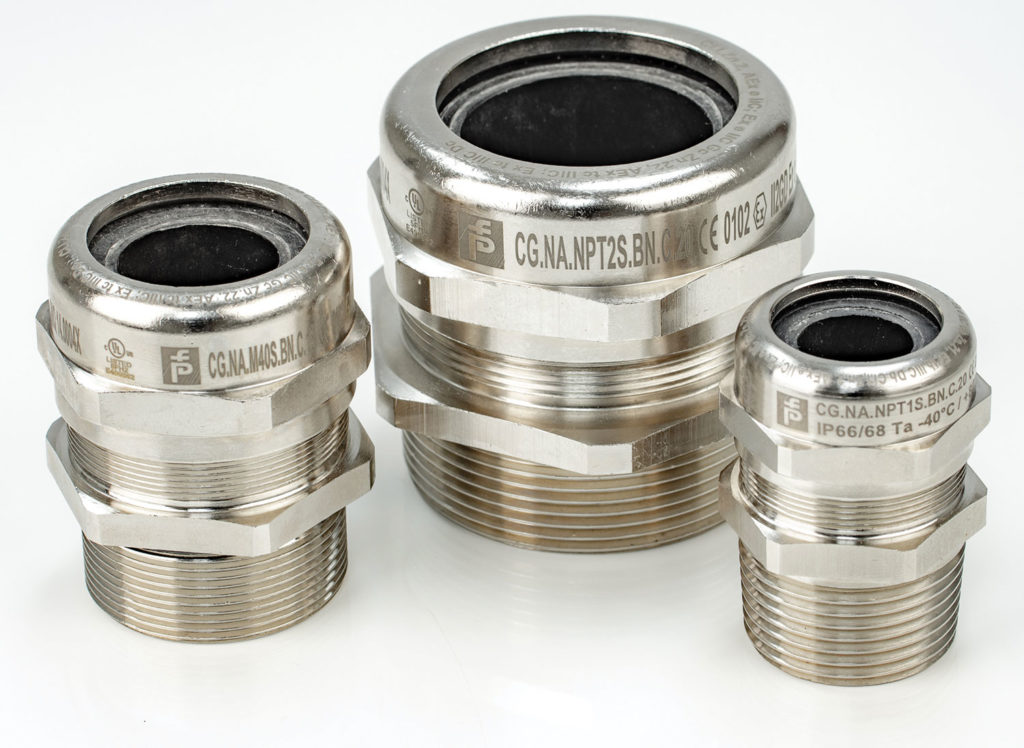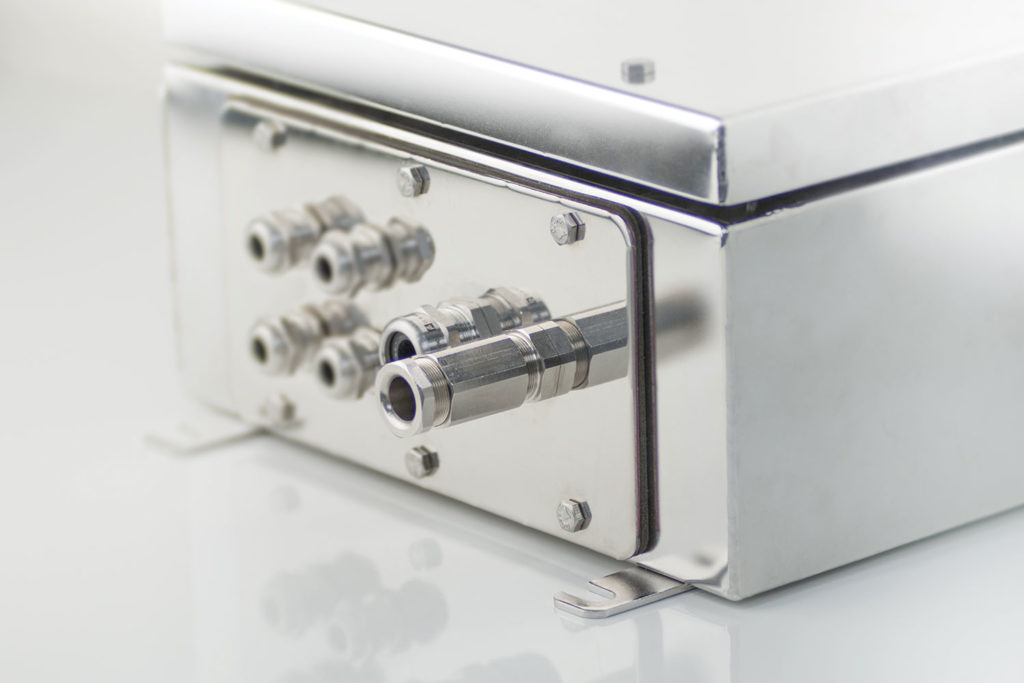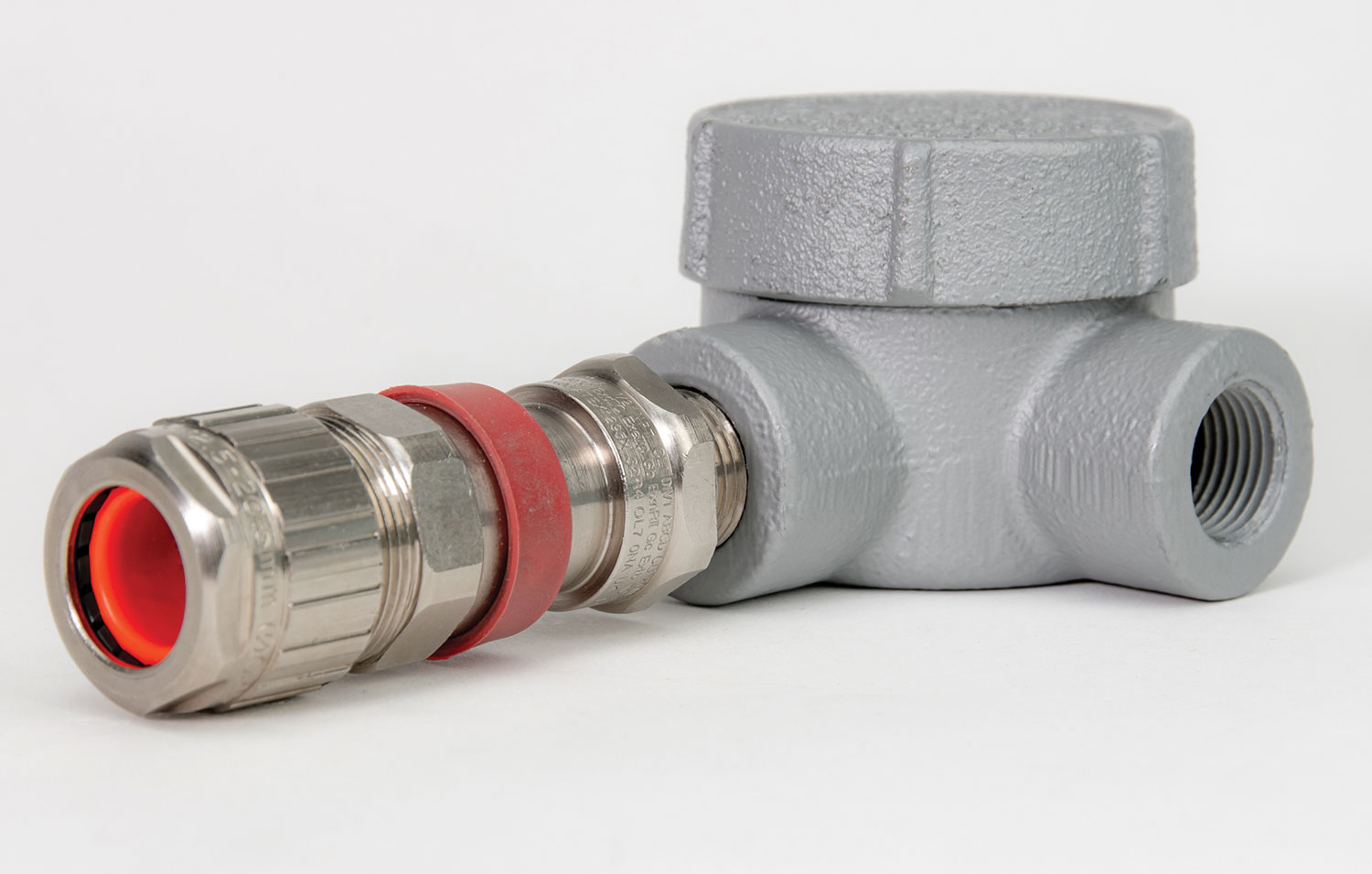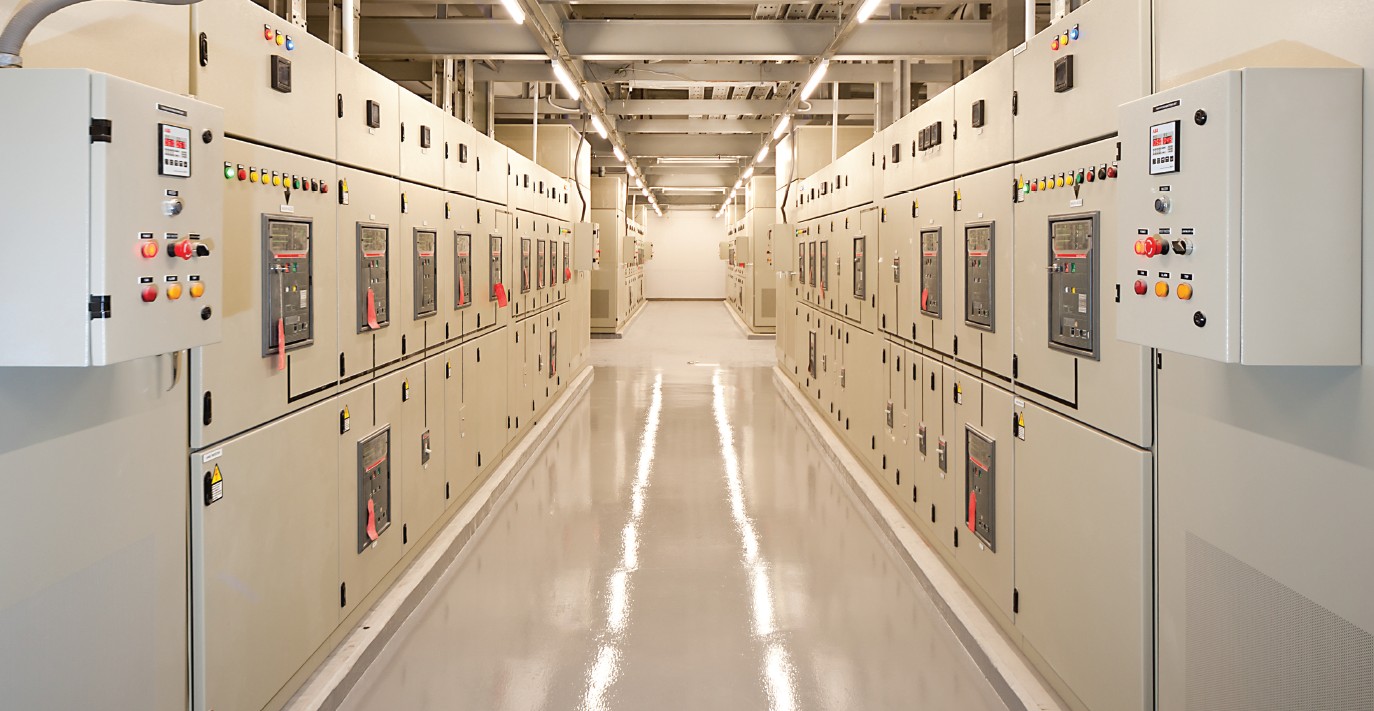This question comes up with surprising frequency when dealing with installations covered by the National Electrical Code (NEC). One possible reason for the confusion is that the wording in the NEC articles regulating installation in hazardous (classified) locations can be difficult to interpret for readers without the proper understanding. For example, NEC Section 501.10(B) refers to “listed fittings” as a requirement for many of the permitted wiring methods in Class I, Division 2 locations. This wording might seem to indicate that these installations require a hazardous location rated, listed, and marked fitting—but this is not the case. Therefore, to ensure compliant protection and avoid unnecessary costs, it is important to understand which cable fittings are required in which situations.
Wiring methods for Class I, Division 2 locations are addressed in Section 501.10(B) of the NEC. Here, in addition to those wiring methods that are permitted for Class I, Division 1 installations in Section 501.10(A), the NEC covers other wiring methods that are permitted for Class I, Division 2. While there are a number of options for the wiring methods permitted, the enclosures (or boxes) and fittings that are permitted in Class I, Division 2 basically come down to two: those for an explosionproof installation and those that are appropriate for Division 2 but are not an explosionproof installation.
Explosionproof defined
Before we proceed, it is important to understand what the NEC means by “explosionproof” or “explosionproof equipment.” Article 100 defines explosionproof equipment as “equipment enclosed in a case that is capable of withstanding an explosion of a specified gas or vapor that may occur within it and of preventing the ignition of a specified gas or vapor surrounding the enclosure by sparks, flashes, or explosion of the gas or vapor within, and that operates at such an external temperature that a surrounding flammable atmosphere will not be ignited thereby.”
In other words, “explosionproof” should be understood as a method of protection for equipment placed into hazardous (classified) locations that is designed to withstand and contain an explosion. The main part of the “case” in the definition is an explosionproof enclosure, typically certified to ANSI/UL 1203 or FM3615. It is incorrect to think of other equipment protection methods like intrinsic safety or purge and pressurization as explosionproof. The safety and risk reduction principles used in these equipment protection methods are completely different from true explosionproof.
Sections 501.105 (B)(2), 501.115(B)(1), and 501.150(B)(1) of the NEC detail when explosionproof enclosures and fittings are required for Class I, Division 2 locations. To summarize these sections, explosionproof terminations at the enclosure are necessary in the following circumstances:
The components or equipment being installed rely on explosionproof casing as the method of protection. In such instances, the installation will need to use properly rated, listed, and marked sealing type fittings appropriate for the area classification. (For example, the equipment uses an explosionproof enclosure and needs to be installed in this manner to maintain safety.)
The equipment being installed is not rated for Class I, Division 2 locations and is known to have ignition hazards (thermal, make/break contacts, etc.). In this case, the equipment would need to be placed into explosionproof enclosures and installed as explosionproof equipment using properly rated, listed, and marked components including the fittings.

When an installation relies on explosionproof casings as the method of protection, the explosionproof enclosure provides a complete, defined compartment or “case” where an explosion would be contained. This compartment is kept discrete and intact through installation of properly rated, listed, and marked explosionproof fittings and application of the sealing material specified for use with the fitting. Explosionproof enclosures rely on the fittings and appropriate sealing material as part of the overall safety function to properly complete the explosionproof installation. Failure to use appropriate fittings and sealing compounds in the installation will result in noncompliance with the requirements for an explosionproof installation. At that point, the safety function of the explosionproof installation can be considered compromised.
The above explanation should help clarify the terminology in Section 501.10. Section 501.10(A) states that the fittings are to be “listed for the location” unless the wiring is terminating into an intrinsically safe apparatus (see Article 504) or in the rare case that the installation does not require an explosionproof seal as part of the installation method. Since section 501.10(A) of the NEC specifically addresses Class I, Division 1 locations, readers would be correct in assuming that the wording used here (“listed for the location”) refers specifically to fittings that are rated, listed, and marked for use in Class I, Division 1 locations. Section 501.10(A)(3) is quite clear: “All boxes and fittings shall be approved for Class I, Division 1.” Since they are to be “approved” for this application, they will be properly rated, listed, and marked for the location.
What is permitted
As stated above, in addition to explosionproof installations, the NEC covers other equipment installation and wiring methods that are permitted for Class I, Division 2 but not required to be explosionproof. The NEC identifies the fittings for these applications as “listed fittings” not “fittings listed for the location.” This difference in wording is deliberate: for the specific Class I, Division 2 installation methods where this terminology (“listed fitting”) is used, these applications do not require an explosionproof installation. However, the Division 2 wiring methods indicated in Section 501.10(B) must be adhered to.
Therefore, enclosure fittings for these Division 2 installations require only a “listed” fitting for ordinary or general-purpose locations based on the wiring method being used.
When equipment being installed does not rely on an explosionproof method of protection and does not have ignition concerns, Section 501.10(B)(4) of the NEC does not require the use of explosionproof enclosures and fittings.
This section explicitly permits the use of standard, non-hazardous location rated enclosures and fittings. However, the enclosure in question must be listed for use in ordinary or general-purpose locations. The fittings used for entries into this type of enclosure must also be listed as ordinary or general-purpose location, in accordance with the Division 2 wiring method being applied. Section 500.8(B)(3) of the NEC further clarifies that sections of Article 501 specifically permit the installation of general-purpose equipment or equipment in general-purpose enclosures in Division 2 locations if the equipment does not constitute a source of ignition under normal operating conditions. Section 500.8(C)(6)(a) further asserts that “fixed general-purpose equipment … that is acceptable for use in Class I, Division 2 locations shall not be required to be marked with the class, division, group, temperature class or ambient temperature range.” Since there are no additional requirements for fittings used in non-explosionproof applications beyond general purpose, these fittings do not require any Class/Division certification or markings.
To summarize, installation situations where the protection method is explosionproof require fittings that are properly rated, listed, and marked for use in the hazardous location, in addition to the explosionproof enclosure. For installation situations where explosionproof is not the method of protection, these installations do not require—and should not have—fittings that are listed or marked for Class/Division locations.

To further support this point, the NEC contains several references to ANSI/UL 2225—Cables and Cable-fittings For Use in Hazardous (Classified) Locations, which provides certification requirements in regard to listed fittings. ANSI/UL 2225 covers requirements for fittings for divisions as well as Zones, and it discusses protection methods that are valid for both. In an update of this standard (March 24, 2017), the marking section was expanded to clarify the identification of cable fittings that can be marked for Division 2.
Dual-marked fittings
Sub-clauses 37.1 and 37.2 list the marking guidelines for a Class I/II and Division 1/2 cable seal fittings. They state that cable fittings shall meet all other requirements in the standard before they can be marked for Division 1 or 2. Since the explosionproof requirements and performance are tied to the end use for the installation, fittings that only meet the Zone requirements are not permitted to also be marked (and certified or listed) for Divisions. This distinction is clarified in sub-clauses 37.3 and 37.4 in regard to the marking for AEx-rated fittings.
According to sub-clause 37.3, “To avoid the risk of explosion due to confusion with explosionproof cord and cable fittings marked ‘Class I, Division 2’ in accordance with 37.2, cord or cable fittings complying only with the requirements for flameproof “d” or increased safety “e” cable fittings shall not be additionally marked ‘Class I, Division 2’” (emphasis added). Sub-clause 37.4 states that “To avoid the risk of explosion due to confusion with explosionproof cord and cable fittings marked ‘Class I, Division 2’ in accordance with 37.2, cord or cable fittings complying only with the requirements for protection by enclosure “ta,” “tb,” “tc,” or “tD” cable fittings shall not be additionally marked Class I, Division 2 or Class II, Division 2” (emphasis added).
Since the Class/Division system marking requirements do not identify the protection method as the IEC-based Zone system marking does, and since the requirements for the Zone protection methods do not fully cover the Division requirements for explosionproof, cable fittings that only meet the Zone requirements cannot be dual marked because there is a safety risk the cable fitting will be used incorrectly in a Division installation that would require an explosionproof seal.
This clarification in the markings stresses an important point when it comes to dual marking or the use of Zone-rated equipment in Divisions. While the NEC has some allowances for Zone-type equipment in Division locations, this is not the case when it comes to cable fittings for explosionproof installations. Also, for installations in Division 2 that are required to be explosionproof, use of a fitting that is marked for use in Division 2 but does not meet the explosionproof requirements per ANSI/UL 2225 potentially poses a risk to the installation. Improper use of fittings in an application that requires an explosionproof installation will result in failure to complete the explosionproof enclosure, thereby compromising the integrity of the explosionproof enclosure and making the installation a safety risk.
Clearly identifying and understanding the situations in which a cable fitting needs to be rated and listed for use in Class I, Division 2 locations can benefit product design, installation, and project design costing. Specifying a Class I, Division 2 rated and listed fitting for the installation when it is not required will add unnecessary costs and installation complications. Generally speaking, if the installation requires an explosionproof seal, the fitting must be an explosionproof fitting rated, listed, and marked for either Class I, Division 1 or Class I, Division 2. If the installation does not require an explosionproof seal, all that is required is an ordinary or general-purpose rated and listed fitting compatible with the appropriate Division 2 wiring method being used















Find Us on Socials